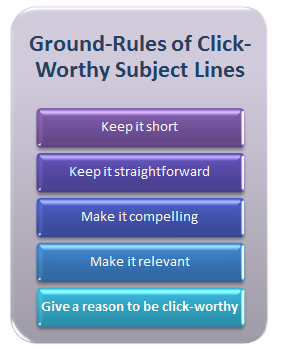
Don’t Sell, Tell In Subject Lines. For Better Open Rates in Email Marketing
Author: Bryan
Consider this. You’ve spent days and weeks tweaking your email campaign, so that it sounds perfect for your target audience. The day finally arrives when you roll it out to 50,000 odd unsuspecting, double opted-in subscribers. After a nail-biting night you return the next day to observe that the open rate is a measly 1.4%. The disappointment sets you off on a whole line of questioning.
Is the content relevant, interesting and informative? Check
Have you built a relationship with your subscribers? Check. Those hours
spent on nurturing workflows, was only dedicated to cozying up to the target audience.
What about the subject line? Oops. Maybe more time should have been spent on subject lines.
In email marketing, the subject line, as we all know, is the first point of contact between your campaign and your subscriber. The success of your campaign depends on whether you can crack this code. You need to know what makes your audience click, or tick (whatever gets them to open your email, right?)
You need to spend as much time on your subject line as you would on your email body copy. Whil
e there are many rules on creating the most effective subject lines, at the end of the day, what works for you, works! Yet we have to be all ears to experts who have used tried and tested methods that work.
Subject Line Length – What’s the Magic Number?
Some say keeping subject lines under 50 characters is the best practice to follow; others don’t really care too much for characters. Most email readers and mobile devices limit subject line character length (most of them have a limit under 33 characters). Keeping it short and simple has lesser chances of your content being cut ou-.
However, the character of your subject line should not be judged only by its length. If you have subscribers who are highly targeted, your subject line can be longer. Limiting the essence of your subject line to character count is not necessarily a reason to be click worthy.
It’s Localization over Personalization Now
Personalization on a ‘first name’ basis has been used for a while now, or maybe even overused. Today, localization seems to be more personal. Targeting subscribers using local information such as city names has better appeal and click through rates.
Beware of Innocent-Looking Words that Affect Open Rates
There are certain words that may not trigger spam filters, but have a negative impact on your open rates. Words like % off, reminder, help, donate, free or offer may not trigger spam filters but are known to affect open rates. Using words in UPPERCASE is another way that will dissuade readers from opening emails.
Use Numbers and Punctuation Reasonably

If you have to use numbers, do it in moderation and mix it up with other creative subject lines. If every email is about ‘5 ways to do something’ or ‘7 ways not to do something’, your subscriber will eventually lose interest. And sparingly use punctuation. Yes
Repetition is Redundant
If you need to send the same email several times (such as reminders for an event), make sure your subject lines are different. Think about it, if you receive 3 emails in 2 weeks with the same subject line, you are less likely to open it the second time round. It will be better to create different emails to increase open rates.
Test, Test, Test with A/B Testing
The only way you can know whether your subject line works, is by testing it. A/B testing is a good way of analyzing which subject line works better. Here’s how it works, suppose you have a list of 10,000 subscribers, send an email with subject line A to 1,000 and send an email with subject line B to another set of 1,000 subscribers. You can find out which subject line works better and then send that email to the remaining 8,000 subscribers.
For Adventurous Marketers
Besides best practices that marketers need to follow, it sometimes pays to take a risk; if you know what you are doing. In all the clutter and inundation of emails, making your subject line unique is quite a challenge. Scanability is the order of the day.
- One word subject lines – Imagine using just one word in your subject line. It could work, only if there is connect, if it is relevant and means something to your audience. An email from Amazon Local had a subject line M3. That’s it. This subject line makes you think, what about M3? What are the new features? Has Amazon reduced prices for M3 line of instances? This curiosity will definitely get you to open the email. If you can pull it off, one-word subject lines are great way to capture attention-deficit readers.
- Alliterations attract attention – Anything creative attracts attention and alliterations are a subtle way of being different. A subject line like, ‘Connect, Converse and Convert Customers’ is a more catchy line than ‘Mass Marketing is No Longer ‘The Real Thing’’.
Remember, the main reason your email will be opened is your subject line. Keep it real. Tell, don’t sell…
Watch this space and we will walk you through the details of A/B testing in one of our upcoming posts. Only to take your subject lines and open rates to the next level.
About Author
Vice President, Sales has a 20 year track record in B2B marketing and sales. With expertise in B2B Email Appending, Enhancement and Validation made accessible to more than 3000 clients worldwide. An avid traveler, takes keen interest in exploring brand development strategies and unchartered techniques for marketing solutions.




